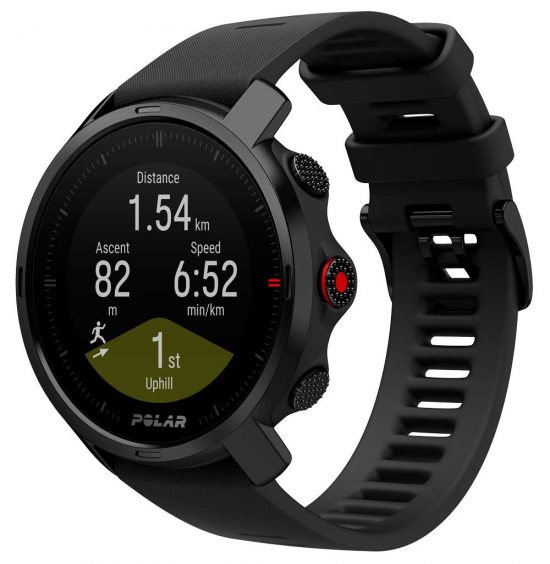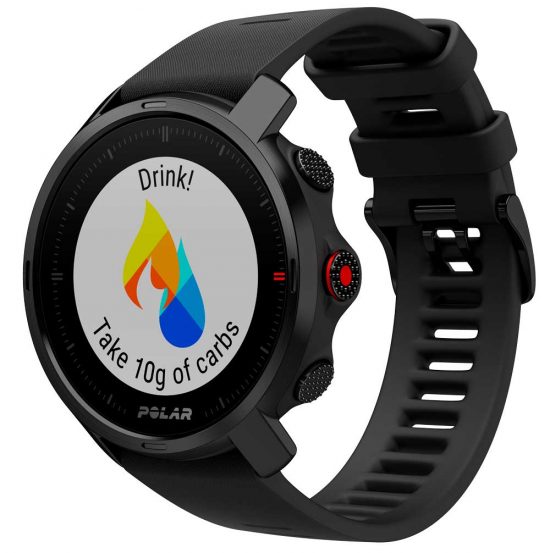 Our reviews are 100% organic. We do not accept payment for reviews or bundle with advertising budgets. In most cases, the brand is providing the product to our reviewers free of charge.
Our reviews are 100% organic. We do not accept payment for reviews or bundle with advertising budgets. In most cases, the brand is providing the product to our reviewers free of charge. Polar originally entered the GPS category from a long-established body of work in heart rate measurement and exercise science. Their Vantage watches, released in 2018, combined their vast inventory of physiological metrics, training assessment and smart coaching with advanced-level daily activity tracking capabilities, making it ideal for multisport endurance athletes. The Grit X progresses the evolution even further, adding more robust navigation options and new features geared specifically toward the mountain trail athlete. Additionally, the impressive battery life of the Vantage is further extended on the Grit X to provide 40 hours in 1-second GPS mode, with power-save options that reach up to 100 hours. The Grit X stands as the most robust model in the Polar lineup but maintains a sleek product design that is comfortable and convenient to use.
During testing, we found the watch to be comfortable and light on the wrist at 64 grams. Over the course of testing, we wore it at work with formal attire (our main tester even wore it at his wedding) in addition to running. The look of this watch is sleek and modern, and is not as imposing on the wrist as bigger watches. After five months of daily use, the face of the Grit X was still as good as new. The textured silicone band has some stretch to it which makes for easy, on-the-go adjustment for accurate heart rate monitoring. Navigation on the watch can be done with either a touchscreen display or use of the five buttons. During testing we found that the touchscreen did lag slightly and was difficult to use in wet/damp conditions.
The underside of the watch houses 10 optical heart rate sensors in green, red, yellow and orange. This use of multiple colors is a new configuration on the Grit X compared to the Vantage watches. The advantage of color variety is that some colors penetrate different pigmentations of skin better than others. This is the granular level of research and development that Polar invests in its heart rate monitoring systems, which is to be expected given the company’s origins. From a practical standpoint, it results in one of the most advanced and most accurate optical HR heart rate systems in this category.
As an everyday training device, the Grit X has everything you would expect in a premier multi-sport watch. There are over 100 activity options to choose from (only 20 can be stored on the watch at a time), and within each activity you can configure multiple data screens with up to four sections per screen. The inventory of data options is quite robust, second only to Garmin, with metrics in every category. The spec battery life is excellent, and we found the burn rate to be about 15-20% per day, but you do need to be attentive to it towards the end of its charge, because GPS activity cannot be started with less than 10% battery life and activity tracking auto stops at the 5% level. From an ultrarunning standpoint, new features that deserve a closer look are HillSplitter, FuelWise and Kamoot route-planning integration.
Hillsplitter automatically detects when you’re beginning a climb or descent, and tracks the duration and elevation change of each hill as if it’s a Strava segment. The data for each hill is displayed on the screen during your activity, then summarized afterwards on the watch and stored on the app. While a useful tool for hill repeats, we did find this feature to be a bit inaccurate on longer trail runs, and there seemed to be a lag of a few hundred feet before the watch recognized uphill or downhill segments.
The FuelWise tool is an alert system that reminds runners when to intake carbohydrates or to drink. Then the Grit X utilizes projected heart rate zones vs actual heart rate zone to measure activity intensity and suggest more or less fuel based on intensity – this is an excellent feature for tweaking your nutrition intake on multi-hour runs. There are drawbacks to the feature, one being that once an activity is complete, there is no breakdown of fuel notifications suggested/taken in, so it’s hard to assess your compliance. Another drawback is not factoring heat/weather into the drink reminders; some of us need extensive reminders to drink more than usual when it’s hot. Interestingly, we found that the Smart Carbs reminder became more accurate after a month of the same tester wearing the watch, as the heart rate zones adjusted to his activity level.
Navigation features on the Grit X are through Komoot, a third-party mapping and navigation partner. Specific routes can be searched for or created on their website and then uploaded onto the watch, giving turn-by-turn directions. Up to 100 routes can be stored on the Grit X at once. In testing this feature, we found Komoot cumbersome to use. Integration requires the user to make a separate account with Komoot and then a specific region of maps (usually broken down by county) is available to the user for free. However, if you want routes or maps from another region, that requires a fee.
Sleep measurement and metrics are now fairly commonplace in training watches, but Polar’s Nightly Recharge feature builds upon those basic metrics and combines them with Autonomic Nervous System tracking to assess your body’s overall recovery status. Based on measured data and the user’s individual measurement history, the feature gives personalized daily tips for exercising, sleeping, and regulating energy levels during the day. Nightly recharge combines with FitSpark, part of Polar’s onboard coaching system for prescribing a specific workout for the day based on your sleep and recovery measurements.
Polar is trending in the right direction to compete for the same user audience as the Garmin Forerunner 945 or the Suunto 9. The Grit X combines excellent physiological monitoring with best-in-category coaching features, but can use some refinement of navigation and climbing feature sets. It’s stylish and comfortable enough for continuous use, with a durable build and feature set to accommodate any activity you choose.
The Polar Grit X is now available at www.polar.com.
MSRP: $430
General Specs:
● Weight: 64 grams
- Face dimensions: 47mm x 13mm
- Satellite systems: GPS+Glonass, GPS+Galileo and GPS+QZSS
- Stainless steel case and Gorilla glass lens
- Battery life:
- 40 hours with 1-second GPS mode
- 100 hours in power save mode
- Always-on color touch screen display
- Wrist based optical HR sensor with 24/7 monitoring
- Water resistant to 100M
- Customization through Polar Flow app or web service
Running-specific features:
- Up to 8 data screens per activity with up to four customizable fields per screen
- Downloadable maps through Komoot with wrist navigation and back to start tracking
- Programmable workouts and HR zones
- Wrist-based running power
- FuelWise smart fueling assistant
- Hillsplitter post-run analysis
Smart Coaching Features:
- Training Load Pro
- Personalized running programs
- FitSpark suggested workouts
- Running Index VO2 Max






2 comments
I recently got the Grit X. I really like it – but then I have always used and love using the Polar sport watches. While they might seem expensive this and others included online training plans and that make the cost worthwhile. It’s integration with Strava and Stride and other sites is awesome. I’m still learning all the feature but this is one of there best this far.
Agreed I also like the Polar sports watches and have been using them for 20+ years. I did try a few others for some specific tasks/sports (e.g.: swimming comes to mind) and found them disappointing. This is not to say that the Polars I have owned were not without problems, but they have always taken care of the problems and made things right. Keep in mind that now with 15 years of data stored on their website and am locked into Polar……. until my final race. Randy
Comments are closed.